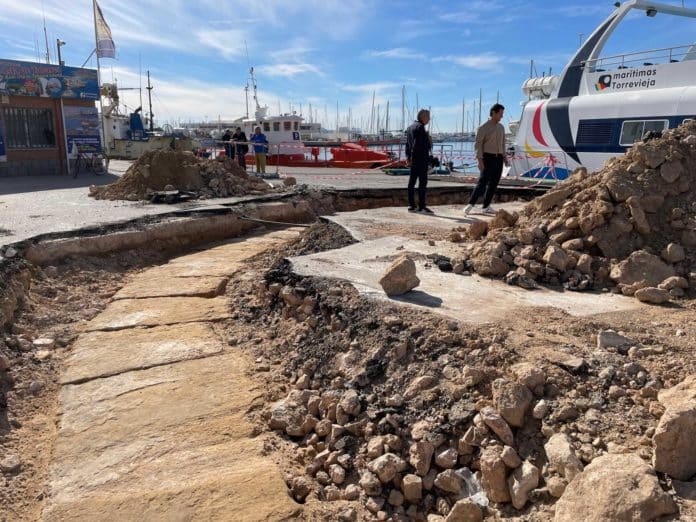Together with council members and local advisors, the mayor of Torrevieja, Eduardo Dolón, has once again visited the archaeological work that are being carried out at the Muelle Mínguez, located on the fishing dock, in front of the historic Bar La Marina.
Archaeologist José Ramón Ortega explained that the works is recovering the remains of this 19th century dock that aims to bring to light what was the first existing dock in the Torrevieja port area.
The mayor said that the intention is to highlight this historical element of the city, to ensure that it can be visited as it is the only such dock of its kind in Spain, and that the bulk of the work will be completed in the first quarter of next year 2024.
As previously reported in The Leader, the Mínguez Dock was the only existing dock In the bay and inlet of Torrevieja, from the 1870s to the 1950s. It allowed the loading and unloading of merchandise, especially fishing and orchard products from the Vega Baja.
Antonio Mínguez, after who the dock was named, was one of the most influential figures in Torrevieja at the time, serving as mayor of the city at different times during this period of great upheaval. Once the Mínguez dock was built, all loading and unloading operations, other than for salt, had to be done at that dock.
There were, however, two other docks of the Eras de la Sal, which the State had built: the western one, first built in 1777, and the eastern one between 1835 and 1841, but only salt from the lagoon was loaded at the Salt Eras docks. Until the Mínguez Dock was built, boats were loaded and unloaded on the beach between Punta Cornuda and the location of that dock.
The disappearance of the Mínguez Dock, functional rather than physical, occurred in the 1950s when the new fishing dock that still exists today was built. Since 1959, the Mínguez pier has been embedded in the fishing pier.
This dock constitutes a historical and heritage asset of undoubted value that has been preserved by being embedded in the port infrastructure later built in Torrevieja. It is included in the Catalog of the General Urban Planning Plan of Torrevieja as a Historical-Artistic Monumental Element.





